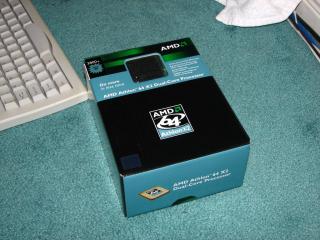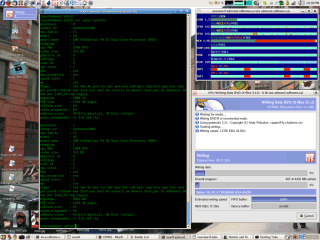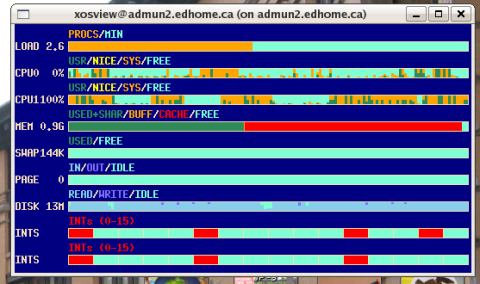I started shop around in Hong Kong before I come back to Canada, but was not able to find a cheap one. The price was about the same when compare to in Canada. Actually, I missed a blow out sale just a month or so ago (~CAN $40 cheaper). I guess what happened is that they no longer make socket 939 X2 CPU as the new one are for socket AM2. But since I already have a socket 939 m/b, I have to stay with socket 939. So, I ended up coming back with no CPU. (and I have no space to bring it because my luggages are all full anyway
Then I was in TO last weekend and search all Pacific Mall but again unable to find any 939 X2 CPU. I guess it's the same story in HK and TO. A bit disappointed, I dropped by RBC computing on Thur. and hope they have one in stock or able to order one for me. Luckily, they have one last 3800+ in stock. So, I happily take it (damage $210).

Installing the CPU was simple. I pop open the case, disassemble the heatsink/fan, swap in the new CPU. That's it. I already upgraded the BIOS a while back so it's already supporting dual-core CPU. I boot up the server to see whether the new CPU boots on Linux. Actually, I have been having problem booting the server with the latest kernel from FC4 64bit and have to run a old kernel. To my relieve, the single-core kernel boots up just fine. Then, I install the latest SMP kernel, reboot, and cross my fingers again. It's a real relieve when the kernel boot up and pass init. Now I have a SMP server!
So, how much performance boost I got from this upgrade? The CPU speed is up from 1.8 Ghz to 2.0 Ghz. The BogoMips (kind of a rough benchmark) is up from 3600 to 3900. It doesn't look that impressive? But the power comes in 2s! The server is now like (note, I say like...) having 2 CPU on it. So, applications can run at the same time, for real. Of course, this is only work if the bus is not overload and become the bottleneck. As for actually how much performance gain I got is yet to know. Maybe I will look into it later.
One improvement that is a side effect of the upgrade is that I am able to run the latest 2.6.17 kernel. That's mean I am finally able to use the latest ivtv driver 0.7.1. With the new driver, I am finally able to detect and use both WinTV pvr-250 and WinTV pvr-150 on the server. Now, I can use one capture card for TV recording and the other one for streaming. I can smell IP TV from admun.

To get a feel of the performance gain, I ssh into the box, start up a xosview to see in real time the system's stat. Then I run k3b and burn some data DVDs. The server barely break a sweat. This is running while other services like Apache, MySQL, sendmail, Torrentflux are running in the background. The impact on my blog is roughly from 0.37sec to 0.41sec of processing time. I don't have old number to compare to, but I guess it's alright.

Last, I noticed from xosview that Linux is able to distribute loads between both CPU, sometimes one CPU is running while the other one seem blocking (by I/O?), and often both CPUs are running task at the same time. That's the indicator of how a SMP system better than a single core one. The system responsiveness should improved as there is always (hopefully) a program is executing.
 My passion has always been on software development, and I know it since I
wrote my first program on an Apple II. I worked on cellular wireless system
in the past (C/C++) and now focus on web application
(LAMP, PHP, MySQL, CakePHP, Symfony, jQuery, Google AppEngine/python).
My passion has always been on software development, and I know it since I
wrote my first program on an Apple II. I worked on cellular wireless system
in the past (C/C++) and now focus on web application
(LAMP, PHP, MySQL, CakePHP, Symfony, jQuery, Google AppEngine/python).
![[Valid XHTML 1.0 Strict]](https://edmondhui.ddns.net/blog/skins/admun3/valid-xhtml.png)
Comments
Leave comment
Trackback